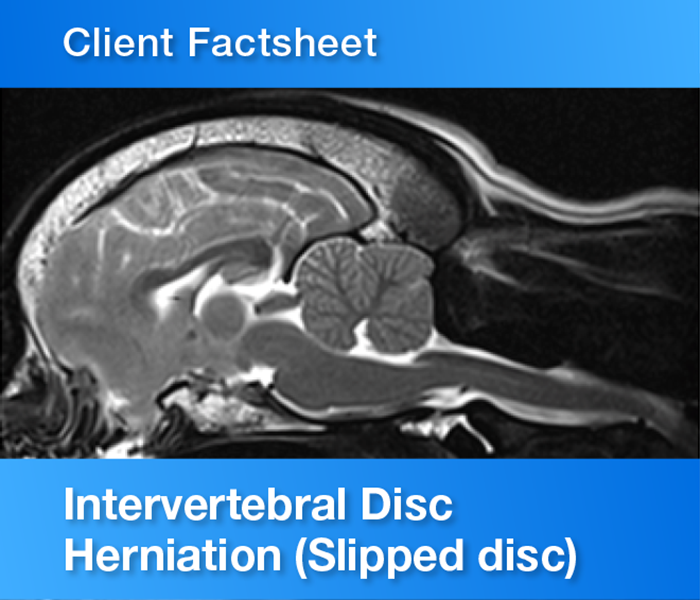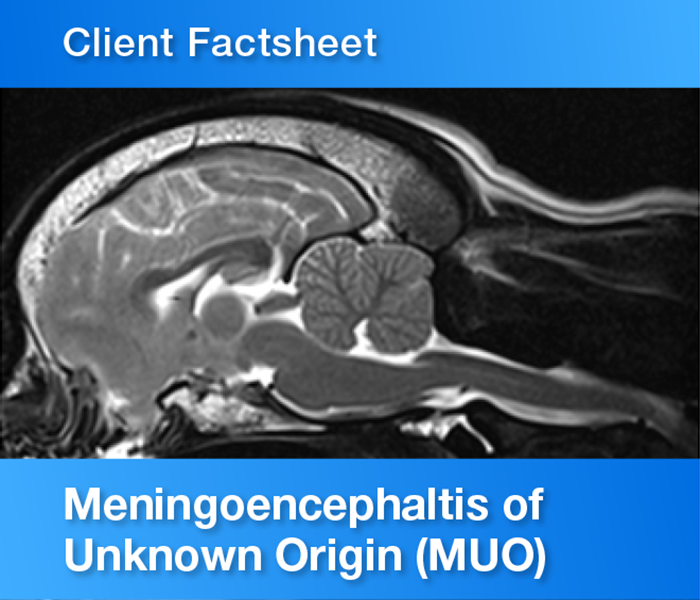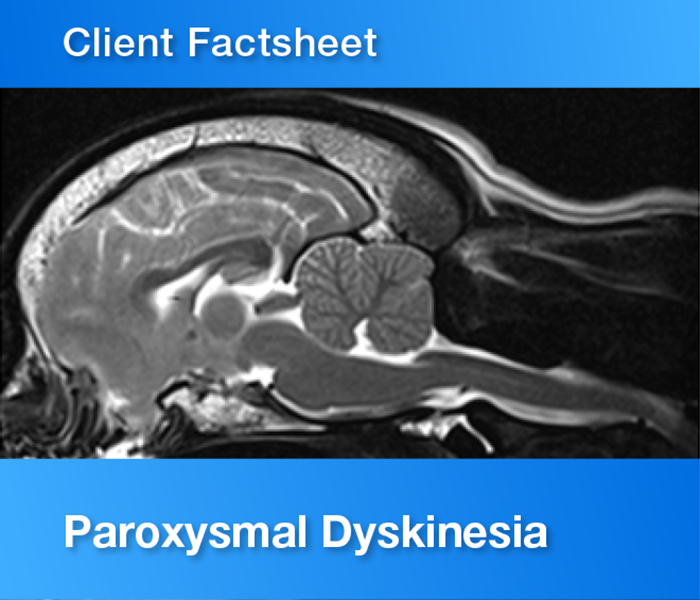There are three types of brain tumour:
- Primary brain tumours are the most common and the term refers to tumours that arise within the tissue of the brain such as meningioma or glioma.
- Secondary brain tumours grow in tissue around the brain, either pressing on or infiltrating the brain such as nasal or ear tumours and tumours of the skull.
- Metastatic brain tumours originate from another organ(s) in the body and spread to the brain.
What causes a brain tumour?
In the case of primary brain tumours, there is a layer of cells in the brain that have the capacity to continue to divide and sometimes cancers can form in this region.
What are the clinical signs (symptoms) of a brain tumour?
The symptoms caused by primary brain tumours are very varied and depend on which area of the brain is affected. This can be seizures (fitting), change in personality/behaviour, pacing aimlessly, circling; or weakness, falling, loss of balance, blindness. Generally speaking, tumours cause one or two of the symptoms on this list and the likelihood of the development of others is relatively low.
How are brain tumours diagnosed?
Ideally the presence of a primary brain tumour is best detected using MRI. However, determining which type of tumour we are dealing with is very difficult. In people, biopsy of a brain tumour is the best way to determine the type of tumour and other information regarding treatment and prognosis can be based on that. A biopsy of the brain is a very invasive and potentially risky procedure, so we do not normally recommend this in animals. Very often a veterinary neurologist will base the diagnosis on a set of key features on the scans unique to tumour types. We appreciate there are limitations to this approach – it makes providing you with accurate information regarding treatment and prognosis quite challenging.
It may be necessary to rule out cancers elsewhere in the body, or potentially the possibility of metastatic brain tumour with x-rays, ultrasound scans or CT scans.
Can you treat a brain tumour?
It depends if the tumour is primary, secondary or due to metastatic spread. Generally speaking, treatment of tumours can be palliative or definitive.
Palliative treatment is generally based on:
- Controlling symptoms – this may include anti-epileptic medications to stop fits.
- Preventing the development of fluid around a tumour and reducing swelling and pressure on the brain – usually with steroids.
Definitive therapy consists of one or a combination of the following:
- Surgery; The ultimate goal of cancer surgery is to remove the tumour completely. Unfortunately, this is rarely possible with brain tumours and there are nearly always tumour cells left behind which cause the tumour to regrow. The aim of the treatment is to remove the bulk of the tumour to give other therapies a better chance of success; by removing as much of the tumour as possible during surgery, the remaining cells may become more ‘sensitive’ to radiation. The polytherapy approach (combination of medication, surgery and radiation) is the mainstay of treatment for most brain tumours in humans. Surgery also allows the vet to obtain a sample of the mass and identify its nature, which may make it easier to give a more accurate prediction of how well the patient is likely to do. Not all brain tumours in dogs and cats can be removed surgically; practically this depends on their position within the brain. Tumours that are on the brain’s surface are more likely to be amenable to surgery. To reach a tumour deep within the brain, the surgeon would have to cut through a large area of healthy brain tissue and this could have devastating effects for the recovery of the patient. Surgery is the most invasive and costly option. Although many dogs recover well and without complication, brain surgery can occasionally cause irreversible damage to the brain. Some owners report that their pet’s personality and behaviour has changed after surgery. Brain surgery does carry a risk, particularly if the patient has other health problems, as a lengthy anaesthetic is needed. Occasionally the patient may not recover from the surgery. The benefits of this option are that it potentially offers the longest period of quality of life for your pet. Veterinary neurologists do not generally advise surgery for tumours that arise from deep within the brain, with a few exceptions, as we feel it is possible to do more harm than good. Tumours of the lining of the brain (meningioma) or some tumours of the pituitary gland can, however, be amenable to surgery, often with good results.
- Radiation treatment (radiotherapy) is sometimes an option for these tumours to slow down the growth and sometimes shrink the tumour. Radiation therapy can result in dramatic and rapid improvement of signs. The benefits of this treatment far outweigh the risks in most pets. It is not common for animals to suffer side-effects from the radiation treatment, but these might include; occasional nausea, mouth ulcers, ear infection or, rarely, blindness. Most of the side-effects of radiation can be controlled with additional medication. The advantage of using radiation treatment, in addition to medication, is that it can provide a longer period of good quality of life than with medication alone. Unfortunately, radiation rarely completely destroys the tumour and average remission times are eight to fourteen months before the tumour recurs.
- Chemotherapy to limit growth/spread of the tumour. There are several options for chemotherapy – most commonly for glioma we use drugs such as Lomustine (CCNU) or Temozolomide. Lomustine is generally well tolerated by animals. It crosses into the brain easily and targets brain tumours. Lomustine is easy to use, in that we give a single oral dose once every six weeks. The disadvantage of this is that once it is given, it is not possible to withdraw it. Temozolomide is also given by mouth and very well tolerated. Potential side effects include stomach upsets (vomiting), diarrhoea, suppression of the bone marrow (potentially causing anaemia and low white blood cell count) and liver and kidney problems with long-term use. Occasional visits to your vet may be required during the course of treatment. Your vet may suggest blood tests every few months to assess the function of organs that may be affected by treatment. How often this is required will be dependent on the pet’s response to treatment.
The decision as to which of these treatments to use for your pet is based on the suspected tumour type, your wishes and a discussion with your veterinary neurologist. In veterinary medicine we do not use high doses of chemotherapy as we are just attempting to limit growth of a tumour, not destroy it. This means that side effects are normally extremely uncommon and generally chemotherapy is well tolerated by dogs and cats.
Steroids are sometimes classed as chemotherapy but more commonly they are referred to as anti-inflammatory medications, which can be very beneficial in reducing the signs associated with tumours in the short-term. Unfortunately, side effects are often seen with steroid use. Common dose-dependent side effects of steroids include increased thirst and hunger (consequently urination and weight gain), lethargy, panting, and increased risk of infections (respiratory, urinary etc).
Your veterinary neurologist or primary care vet will discuss with you what side effects may be expected with medication.
What is the prognosis for a brain tumour?
The prognosis for primary brain tumours is highly variable and sadly quite difficult to predict, given that we often do not obtain a full histological (biopsy) diagnosis and the types of treatment we use are quite varied.
With palliative treatment, most animals with glioma or meningioma can be expected to have a good quality of life with controlled/reduced symptoms for several months.
With definitive treatment, ie the addition of chemotherapy, we hope the time of controlled/reduced symptoms will last for a longer period of time.
As a rough guide, average remission time ranges from one to six months with corticosteroids alone, from eight to 14 months with radiotherapy alone, and 12 to 20 months with surgery followed by radiotherapy. Whatever the treatment chosen, the overall aims should be to improve the animal’s quality of life and to help them live for as long as possible with their owners.



